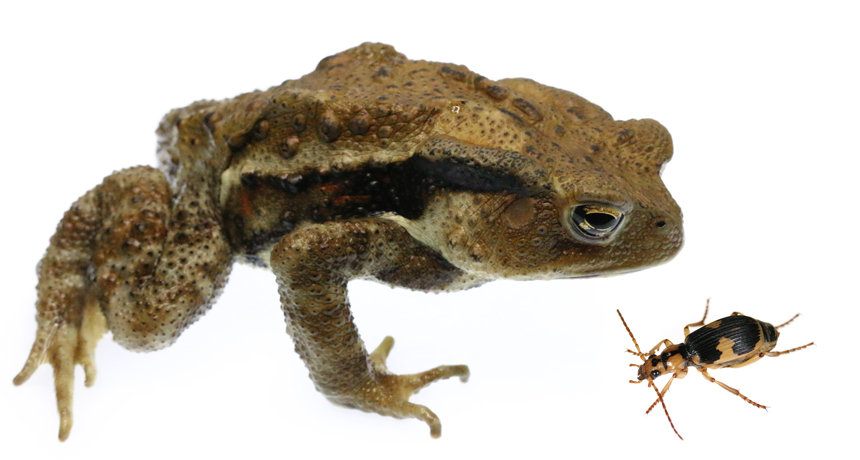It’s a bad idea for a toad to swallow a bombardier beetle

Toad versus bombardier beetle is almost a fair fight. Toads are hugely bigger, can tongue-strike in an eyeblink and swallow all kinds of nasty stuff. But bombardier beetles can shoot hot steam and noxious chemicals from their back ends.
In a lab face-off, 43 percent of Pheropsophus jessoensis bombardiers escaped alive after being swallowed by toads, a pair of researchers at Kobe University in Japan report February 7 in Biology Letters. These lucky beetles were vomited up — in one case, 107 minutes after being gulped — covered with goo, but still able to pull themselves together and walk away. Fifteen of the 16 beetles coughed up into daylight lived for at least 17 days, with one still going 562 days later.
Scalding internal beetle blasts proved vital in persuading the toads to spit the bugs up, ecologists Shinji Sugiura and Takuya Sato report. The pair prodded beetles into spraying until no more defensive chemicals remained, and then fed defenseless beetles to toads. The toads kept almost all of these beetles down.
The bombardier group of more than 600 beetle species has become a textbook example of chemical defense (SN Online: 4/30/15). When provoked, the beetles mix two substances inside their abdomens that react explosively, then shoot this cocktail out of their bodies in a noxious stream that can reach around 100° Celsius. Yet the defenses of very few of the species have been tested, Sugiura says.
P. jessoensis beetles are common in East Asia. In the lab, wild-caught toads (Bufo japonicus and B. torrenticola) willingly swallowed these beetles. With each big gulp, the researchers listened for the sound of an outraged beetle blast inside the toad. “Not easy to hear,” Sugiura says, but it’s possible to catch a slight bu or vu sound.
Surviving beetles spent 12 to 107 minutes in a toad stomach with average stomach time in the 40-minute range. To vomit, a toad has to sort of turn its stomach inside out, which isn’t a quick process. So far, researchers don’t know if the swallowed beetles have any tricks for survival, such as somehow chemically lessening the power of toad gastric juices.
Making a toad give back its lunch is an accomplishment. “Toads are tough,” says evolutionary ecologist Rick Shine of the University of Sydney, who has studied cane toads. They can eat bees, though he has run across an account suggesting even this voracious species finds swallowing a big carpenter bee a bit uncomfortable, performing “abdominal motions suggestive of the Hawaiian hula.”
Swallowing a bombardier beetle sounds much worse, says Gregory Brown, also with the University of Sydney. That hot chemical blast would be like “having a small bomb go off in their stomachs,” he says. “What does surprise me is that the defense only worked around 50 percent of the time.”